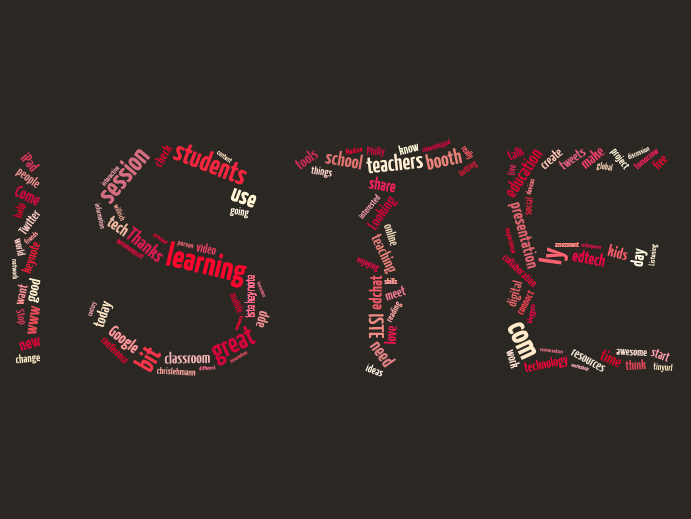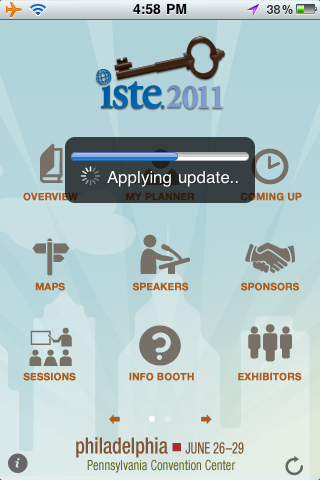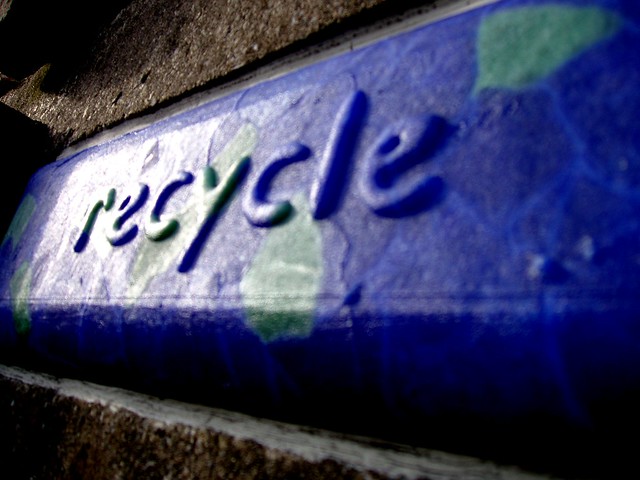Update (2011): This absolutely as relevant for the 2011 conference as it was for last year’s conference.
First, I want to preface what follows with the stipulation that although I had the complaints listed below, I really, really enjoyed attending ISTE and will attend again. I’d just like the conference to be more environmentally conscious.
When I attended ISTE this year, I was overwhelmed by the size of the convention center. I walked around the entire place and just couldn’t believe how big it was and how many people there were attending. According to a Tweet I read on Twitter, there were over 12,000 people in attendance. After I looked around the conference I realized what a huge amount of waste must be occurring every day of the conference.
First there were the watering stations. This was a great idea, with poor execution. The idea was that we should fill up our water bottles at these stations, but every single station also had hundreds of paper cups available, which I saw people using often. Every person at the conference could have been given a water bottle at the beginning, instead of the only 2000 which were handed out, and a sign could have been put up at the watering station directing people to go pick up their water bottle and refill it. Perhaps by the end of the conference some of the people who had not previously been using reusable water bottles would get into the habit as an added bonus!
Next, every vendor had hoards of paper to hand out to people who attended. This is a technology conference! People who come have internet access. Next time either give people a little card with an web address on it, provide QR codes so people can access the website directly with their smart-phones, or at the very least scan people’s ids (which all had barcodes) and promise to only send 1 email with the same information in PDF format. The amount of paper wasted in this way was staggering, it must have been a few dozen sheets per person at least, which would mean well over 150,000 sheets of glossy color paper were given to attendees.
The ISTE organizers gave every participant a copy of the program guide to look at. This included maps, which could and should have been posted up at strategic places within the venue itself, an out-of-date schedule, which was already in electronic form on the ISTE conference website, and a daily newspaper. Again, this is a technology conference, use the technology effectively! Demonstrate best practices. There were hundreds of laptops with internet connections set up all over the place; these could have been better utilized.
The food at the conference center was pretty horrible. I mean, it was bland, boring, and tasteless. When I went to a Thai restaurant on the last night of the conference (for reference Spicy Basil near 1st avenue and Broadway), I recommended that they contact the conference center and offer their services. I was serious! Food which is bland and tasteless tends not to be eaten and this results in more waste. Around the convention center there were various “free food” stalls set up, which was great, but I know that much of this food went straight into the trash later.
It seemed like the hundreds of laptops, which were set up for participants use, and all of the other electronic devices set up around the building were set on "always on" mode. Everywhere I looked there was another screen blaring at me. I put my laptop to sleep when I’m not using it, and it saves the battery because it uses a lot less power. The amount of power a single laptop uses is not a huge amount, but hundreds of laptops around the convention center, and dozens of LCD projectors focused on interactive white boards, combined with dozens of television screens, all on for 4 days straight, has got to make an impact on the energy consumption of the building.
Our role as educators is not just to find examine our teaching practices. As role models for our students and our communities we must examine our daily practices outside of school as well. Technology is a terrific tool, but we must not forget that our planet is being overwhelmed by greenhouse gases and pollution and whatever little bit we can contribute to solving this issue is important.
Let’s try and run a greener conference next year, shall we?

 Now let’s compare these numbers to the fairly good conference planner App that ISTE released.
Now let’s compare these numbers to the fairly good conference planner App that ISTE released.